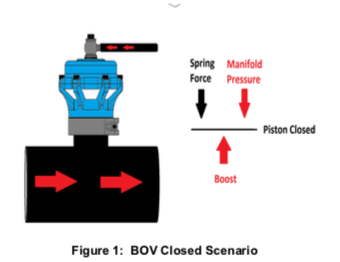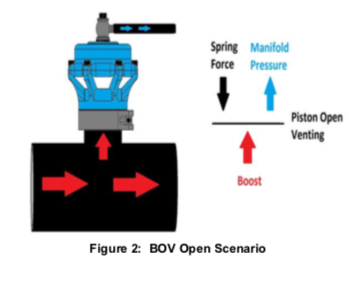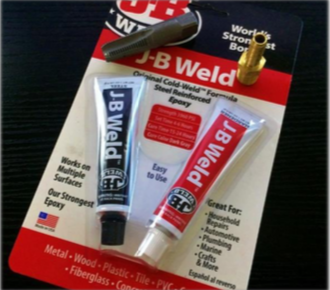We at VTT have noticed issues involving blow off/bypass valves becoming more prevalent in the N54 world.
Let’s clear the air and help sort this out. In order to break it down, we’ll define the valves, go into simple operation, why it matters for a turbo system, and our recommendations.

What is a Blow Off Valve, a Bypass Valve, and what’s the difference? Functionally, all a Blow Off Valve (BOV) does is prevent compressor surge. It does this by venting excess charge pipe pressure when the driving condition calls for it. Normally located between the turbo and the throttle, most N54’s position the BOV on the cold side charge pipe (after the FMIC). The BOV uses a combination of spring force and the pressure differential (if present) between the charge pipe and the manifold to open or close. What about Bypass, or Recirculating Valves? They do exactly the same thing, except they vent the excess air back to the intake piping instead of just venting to atmosphere. Confused? No worries. Here is an easy example; let’s say you were accelerating; you built lots of boost and are having fun but it’s time to get out of the throttle. Let’s slow things down and take a look at what’s really going on around that BOV both right before you lift your foot from the throttle, as well as right after.
Prior to Throttle Lift: The compressor is supplying compressed air at your boost target; the wastegate is adjusted such that sufficient exhaust is flow ing through the turbine to spin it fast enough for you to stay on target. The BOV is fully closed, and the diagram shown above in Figure 1 shows why; boost pressure in the charge pipe is roughly equivalent to boost pressure in the manifold, thus the BOV is fully shut via spring force (boost pressures cancel out).

Why does this matter and what exactly is important? Great question -glad you asked! First let’s look at a situation where there is no BOV or Recirc Valve. You roll into boost, all is well, then you step off throttle. The manifold will still see vacuum, but the engine isn’t ingesting near as much air, so we’re far to the left on a compressor map (high boost/low flow) -right into the land of surge. Surge is a region of flow instability/aerodynamic stall, and imparts huge thrust loading forces on the turbo. The best-case scenario here is some premature wear on thrust surfaces; worst-case involves situations like compressor nuts backing off and destroying compressors, shafts breaking, metal shards going through your FMIC and maybe into your motor, and other non-optimal situations that generally end with a tow truck and a sizable dent in your wallet. While this “no BOV” scenario is bad, an improperly set up BOV can get you into the same position by not venting enough air or taking too long before it vents.
Our recommendations are simple and straight forward; on any motor with upgraded turbos -from Billet Compressors on a lowly OEM Replacement to GC’s- upgrade the factory diverter valves to a proper BOV with a properly sized (dedicated) line. We at VTT like the Tial and the Turbosmart components. It’s not enough to just bolt one of these on the car though, it needs to be set up properly. If your spring is too strong, or the vacuum line going to the BOV is insufficient, either of these things can cause the BOV to have reduced performance and be more likely to cause surge. Stay away from surge and set it up correctly! Setting up a BOV (or recirc valve) properly is generally a two-part function. The first part is choosing the correct spring, and the second part is ensuring a proper vacuum line is routed to the valve itself.
Spring Tension: You generally will choose a BOV spring based on the vehicle idle vacuum -it has nothing to do with boost targets. You want a spring in the BOV that is the lightest one available that still keeps the valve closed at idle. For Tial, we like the black spring. For Turbosmart we like the Orange spring. If you see that your valve is cracked open ever so slightly at idle this is ok, or you can add a thin shim in order to just barely keep that valve closed.

Vacuum lines: All BOV and BPV’s need a dedicated line of sufficient size. The literature on the Tial is very clear on this – teeing off other lines from your BOV line can and will cause delayed BOV response, which puts you back into situations that can cause surge, stuck on side of road, tow trucks, wallet dents/etc; run a dedicated line. Unfortunately, just a clean line isn’t enough, it needs to be larger than the factory BMW vacuum lines too, which means we recommend tapping the manifold with a larger fitting. See Figure 3 for the parts I used. Take your time, make small drill bit jumps to prepare for the tap (last drill bit size will be 7/16”), and unless you like putting plastic inside your motor, we recommend removing the manifold to do the work. This isn’t as hard of a job as it may initially seem – plenty of DIY’s out there, and if you have problems you can always email us and ask for pointers.
Final Thoughts: Once properly installed and set up you’ll find a high quality BOV will add to your drivability and improve turbo longevity. Stay out of surge! As always, the turbos and components should be matched to the power, reliability, and response goals of the customer. From 100k+ mile stock motors to fully built dedicated track cars, let us know if we can help you sort out a package that will deliver what you’re looking for.
BOV Springs:
If you already have a Turbosmart or Tial BOV, and want the correct spring
Tial Spring available here (black is what is needed):
Turbosmart Spring Part Number(Orange) we keep these in stock: TS RaceportTS-0204-2015 (orange spring)
